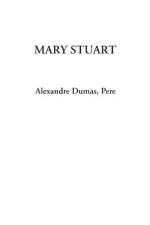Meanwhile the regent had returned to Edinburgh, enriched with presents from Elizabeth, and having gained, in fact, his case with her, since Mary remained a prisoner. He employed himself immediately in dispersing the remainder of her adherents, and had hardly shut the gates of Lochleven Castle upon Westmoreland than, in the name of the young King James VI, he pursued those who had upheld his mother’s cause, and among them more particularly the Hamiltons, who since the affair of “sweeping the streets of Edinburgh,” had been the mortal enemies of the Douglases personally; six of the chief members of this family were condemned to death, and only obtained commutation of the penalty into an eternal exile on the entreaties of John Knox, at that time so powerful in Scotland that Murray dared not refuse their pardon.
One of the amnestied was a certain Hamilton of Bothwellhaugh, a man of ancient Scottish times, wild and vindictive as the nobles in the time of James I. He had withdrawn into the highlands, where he had found an asylum, when he learned that Murray, who in virtue of the confiscation pronounced against exiles had given his lands to one of his favourites, had had the cruelty to expel his sick and bedridden wife from her own house, and that without giving her time to dress, and although it was in the winter cold. The poor woman, besides, without shelter, without clothes, and without food, had gone out of her mind, had wandered about thus for some time, an object of compassion but equally of dread; for everyone had been afraid of compromising himself by assisting her. At last, she had returned to expire of misery and cold on the threshold whence she had been driven.
On learning this news, Bothwellhaugh, despite the violence of his character, displayed no anger: he merely responded, with a terrible smile, “It is well; I shall avenge her.”
Next day, Bothwellhaugh left his highlands, and came down, disguised, into the plain, furnished with an order of admission from the Archbishop of St. Andrews to a house which this prelate—who, as one remembers, had followed the queen’s fortunes to the last moment—had at Linlithgow. This house, situated in the main street, had a wooden balcony looking on to the square, and a gate which opened out into the country. Bothwellhaugh entered it at night, installed himself on the first floor, hung black cloth on the walls so that his shadow should not be seen from without, covered the floor with mattresses so that his footsteps might not be heard on the ground floor, fastened a racehorse ready saddled and bridled in the garden, hollowed out the upper part of the little gate which led to the open country so that he could pass through it at a gallop, armed himself with a loaded arquebuse, and shut himself up in the room.




